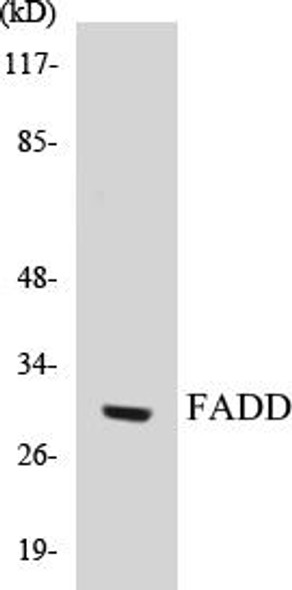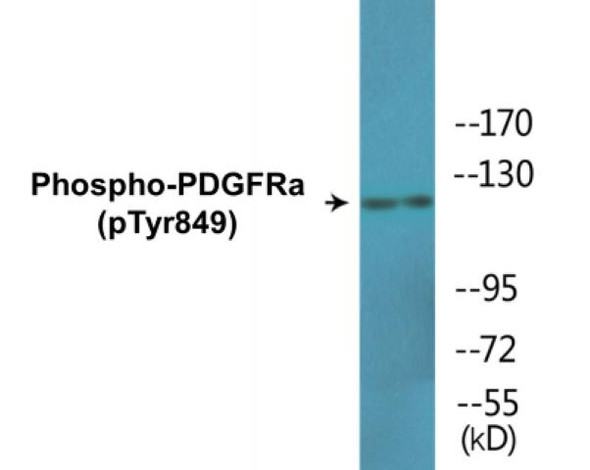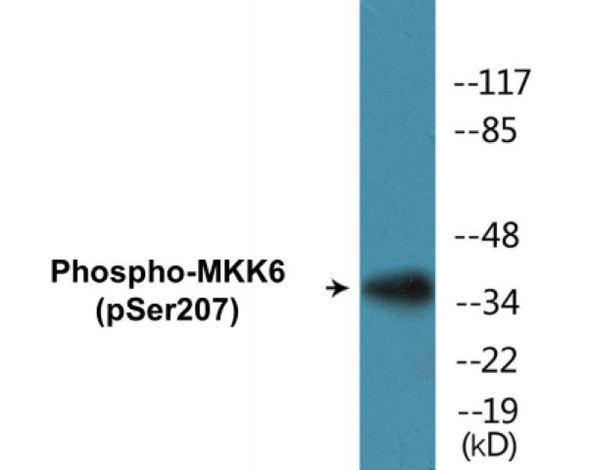Description
FADD (Phospho-Ser194)Colorimetric Cell-Based ELISA Kit
The FADD Phospho-Ser194 Colorimetric Cell-Based ELISA Kit is a cutting-edge tool for the accurate quantification of FADD phosphorylation at serine 194 in cell lysates. This kit offers exceptional sensitivity and specificity, ensuring precise and consistent results for your research needs.FADD (Fas-associated death domain protein) is a key regulator of apoptosis, playing a crucial role in cell death and survival pathways. Phosphorylation of FADD at serine 194 has been implicated in various cellular processes, including cell cycle regulation and immune response modulation.
Understanding the dynamics of FADD phosphorylation can provide valuable insights into disease mechanisms and therapeutic targets.With its user-friendly protocol and high-performance capabilities, the FADD Phospho-Ser194 Colorimetric Cell-Based ELISA Kit is an indispensable tool for studying signaling pathways and drug development in the fields of cancer biology, immunology, and beyond. Elevate your research with this advanced ELISA kit from Assay Genie.
| Product Name: | FADD (Phospho-Ser194)Colorimetric Cell-Based ELISA Kit |
| Product Code: | CBCAB00410 |
| ELISA Type: | Cell-Based |
| Target: | FADD (Phospho-Ser194) |
| Reactivity: | Human |
| Dynamic Range: | > 5000 Cells |
| Detection Method: | Colorimetric 450 nm |
| Format: | 2 x 96-Well Microplates |
The FADD (Phospho-Ser194) Colorimetric Cell-Based ELISA Kit is a convenient, lysate-free, high throughput and sensitive assay kit that can detect FADD protein phosphorylation and expression profile in cells. The kit can be used for measuring the relative amounts of phosphorylated FADD in cultured cells as well as screening for the effects that various treatments, inhibitors (ie. siRNA or chemicals), or activators have on FADD phosphorylation.
Qualitative determination of FADD (Phospho-Ser194) concentration is achieved by an indirect ELISA format. In essence, FADD (Phospho-Ser194) is captured by FADD (Phospho-Ser194)-specific primary antibodies while the HRP-conjugated secondary antibodies bind the Fc region of the primary antibody. Through this binding, the HRP enzyme conjugated to the secondary antibody can catalyze a colorimetric reaction upon substrate addition. Due to the qualitative nature of the Cell-Based ELISA, multiple normalization methods are needed:
| 1. | A monoclonal antibody specific for human GAPDH is included to serve as an internal positive control in normalizing the target absorbance values. |
| 2. | Following the colorimetric measurement of HRP activity via substrate addition, the Crystal Violet whole-cell staining method may be used to determine cell density. After staining, the results can be analysed by normalizing the absorbance values to cell amounts, by which the plating difference can be adjusted. |
| Database Information: | Gene ID: 8772, UniProt ID: Q13158, OMIM: 602457, Unigene: Hs.86131 |
| Gene Symbol: | FADD |
| Sub Type: | Phospho |
| UniProt Protein Function: | FADD: an adaptor molecule that mediates apoptosis. Recruited through its C-terminal death domain by Fas-receptor, tumor necrosis factor receptor, TNFRSF25, and TRAIL-receptor, participating in the death signaling initiated by these receptors. Interaction with the receptors unmasks the N-terminal effector domain of this protein, which recruits caspase-8, and thereby activates the cysteine protease cascade. Knockout studies in mice also suggest the importance of this protein in early T cell development. |
| UniProt Protein Details: | Protein type:Apoptosis; Adaptor/scaffold Chromosomal Location of Human Ortholog: 11q13.3 Cellular Component: neuron projection; CD95 death-inducing signaling complex; cytosol; lipid raft Molecular Function:identical protein binding; protein binding; protease binding; death receptor binding; protein complex binding; tumor necrosis factor receptor superfamily binding; tumor necrosis factor receptor binding Biological Process: viral reproduction; positive regulation of apoptosis; apoptosis; positive regulation of T cell mediated cytotoxicity; positive regulation of proteolysis; protein heterooligomerization; T cell differentiation in the thymus; toll-like receptor 3 signaling pathway; positive regulation of activated T cell proliferation; positive regulation of interleukin-8 production; T cell homeostasis; positive regulation of macrophage differentiation; toll-like receptor 4 signaling pathway; defense response to virus; positive regulation of adaptive immune response; spleen development; caspase activation; positive regulation of I-kappaB kinase/NF-kappaB cascade; thymus development; MyD88-independent toll-like receptor signaling pathway; positive regulation of tumor necrosis factor production; lymph node development; positive regulation of interferon-gamma production; induction of apoptosis via death domain receptors; toll-like receptor signaling pathway; innate immune response; positive regulation of transcription from RNA polymerase II promoter Disease: Infections, Recurrent, With Encephalopathy, Hepatic Dysfunction, And Cardiovascular Malformations |
| NCBI Summary: | The protein encoded by this gene is an adaptor molecule that interacts with various cell surface receptors and mediates cell apoptotic signals. Through its C-terminal death domain, this protein can be recruited by TNFRSF6/Fas-receptor, tumor necrosis factor receptor, TNFRSF25, and TNFSF10/TRAIL-receptor, and thus it participates in the death signaling initiated by these receptors. Interaction of this protein with the receptors unmasks the N-terminal effector domain of this protein, which allows it to recruit caspase-8, and thereby activate the cysteine protease cascade. Knockout studies in mice also suggest the importance of this protein in early T cell development. [provided by RefSeq, Jul 2008] |
| UniProt Code: | Q13158 |
| NCBI GenInfo Identifier: | 2498355 |
| NCBI Gene ID: | 8772 |
| NCBI Accession: | Q13158.1 |
| UniProt Secondary Accession: | Q13158,Q14866, Q6IBR4, |
| UniProt Related Accession: | Q13158 |
| Molecular Weight: | 208 |
| NCBI Full Name: | FAS-associated death domain protein |
| NCBI Synonym Full Names: | Fas (TNFRSF6)-associated via death domain |
| NCBI Official Symbol: | FADD |
| NCBI Official Synonym Symbols: | GIG3; MORT1 |
| NCBI Protein Information: | FAS-associated death domain protein; growth-inhibiting gene 3 protein; mediator of receptor induced toxicity; mediator of receptor-induced toxicity; Fas-associating protein with death domain; Fas-associating death domain-containing protein |
| UniProt Protein Name: | FAS-associated death domain protein |
| UniProt Synonym Protein Names: | FAS-associating death domain-containing protein; Growth-inhibiting gene 3 protein; Mediator of receptor induced toxicity; Protein FADD |
| Protein Family: | Fas-associated death domain protein |
| UniProt Gene Name: | FADD |
| UniProt Entry Name: | FADD_HUMAN |
| Component | Quantity |
| 96-Well Cell Culture Clear-Bottom Microplate | 2 plates |
| 10X TBS | 24 mL |
| Quenching Buffer | 24 mL |
| Blocking Buffer | 50 mL |
| 15X Wash Buffer | 50 mL |
| Primary Antibody Diluent | 12 mL |
| 100x Anti-Phospho Target Antibody | 60 µL |
| 100x Anti-Target Antibody | 60 µL |
| Anti-GAPDH Antibody | 60 µL |
| HRP-Conjugated Anti-Rabbit IgG Antibody | 12 mL |
| HRP-Conjugated Anti-Mouse IgG Antibody | 12 mL |
| SDS Solution | 12 mL |
| Stop Solution | 24 mL |
| Ready-to-Use Substrate | 12 mL |
| Crystal Violet Solution | 12 mL |
| Adhesive Plate Seals | 2 seals |
The following materials and/or equipment are NOT provided in this kit but are necessary to successfully conduct the experiment:
- Microplate reader able to measure absorbance at 450 nm and/or 595 nm for Crystal Violet Cell Staining (Optional)
- Micropipettes with capability of measuring volumes ranging from 1 µL to 1 ml
- 37% formaldehyde (Sigma Cat# F-8775) or formaldehyde from other sources
- Squirt bottle, manifold dispenser, multichannel pipette reservoir or automated microplate washer
- Graph paper or computer software capable of generating or displaying logarithmic functions
- Absorbent papers or vacuum aspirator
- Test tubes or microfuge tubes capable of storing ≥1 ml
- Poly-L-Lysine (Sigma Cat# P4832 for suspension cells)
- Orbital shaker (optional)
- Deionized or sterile water
*Note: Protocols are specific to each batch/lot. For the correct instructions please follow the protocol included in your kit.
| Step | Procedure |
| 1. | Seed 200 µL of 20,000 adherent cells in culture medium in each well of a 96-well plate. The plates included in the kit are sterile and treated for cell culture. For suspension cells and loosely attached cells, coat the plates with 100 µL of 10 µg/ml Poly-L-Lysine (not included) to each well of a 96-well plate for 30 minutes at 37°C prior to adding cells. |
| 2. | Incubate the cells for overnight at 37°C, 5% CO2. |
| 3. | Treat the cells as desired. |
| 4. | Remove the cell culture medium and rinse with 200 µL of 1x TBS, twice. |
| 5. | Fix the cells by incubating with 100 µL of Fixing Solution for 20 minutes at room temperature. The 4% formaldehyde is used for adherent cells and 8% formaldehyde is used for suspension cells and loosely attached cells. |
| 6. | Remove the Fixing Solution and wash the plate 3 times with 200 µL 1x Wash Buffer for five minutes each time with gentle shaking on the orbital shaker. The plate can be stored at 4°C for a week. |
| 7. | Add 100 µL of Quenching Buffer and incubate for 20 minutes at room temperature. |
| 8. | Wash the plate 3 times with 1x Wash Buffer for 5 minutes each time. |
| 9. | Add 200 µL of Blocking Buffer and incubate for 1 hour at room temperature. |
| 10. | Wash 3 times with 200 µL of 1x Wash Buffer for 5 minutes each time. |
| 11. | Add 50 µL of 1x primary antibodies Anti-FADD (Phospho-Ser194) Antibody, Anti-FADD Antibody and/or Anti-GAPDH Antibody) to the corresponding wells, cover with Parafilm and incubate for 16 hours (overnight) at 4°C. If the target expression is known to be high, incubate for 2 hours at room temperature. |
| 12. | Wash 3 times with 200 µL of 1x Wash Buffer for 5 minutes each time. |
| 13. | Add 50 µL of 1x secondary antibodies (HRP-Conjugated AntiRabbit IgG Antibody or HRP-Conjugated Anti-Mouse IgG Antibody) to corresponding wells and incubate for 1.5 hours at room temperature. |
| 14. | Wash 3 times with 200 µL of 1x Wash Buffer for 5 minutes each time. |
| 15. | Add 50 µL of Ready-to-Use Substrate to each well and incubate for 30 minutes at room temperature in the dark. |
| 16. | Add 50 µL of Stop Solution to each well and read OD at 450 nm immediately using the microplate reader. |
(Additional Crystal Violet staining may be performed if desired – details of this may be found in the kit technical manual.)






